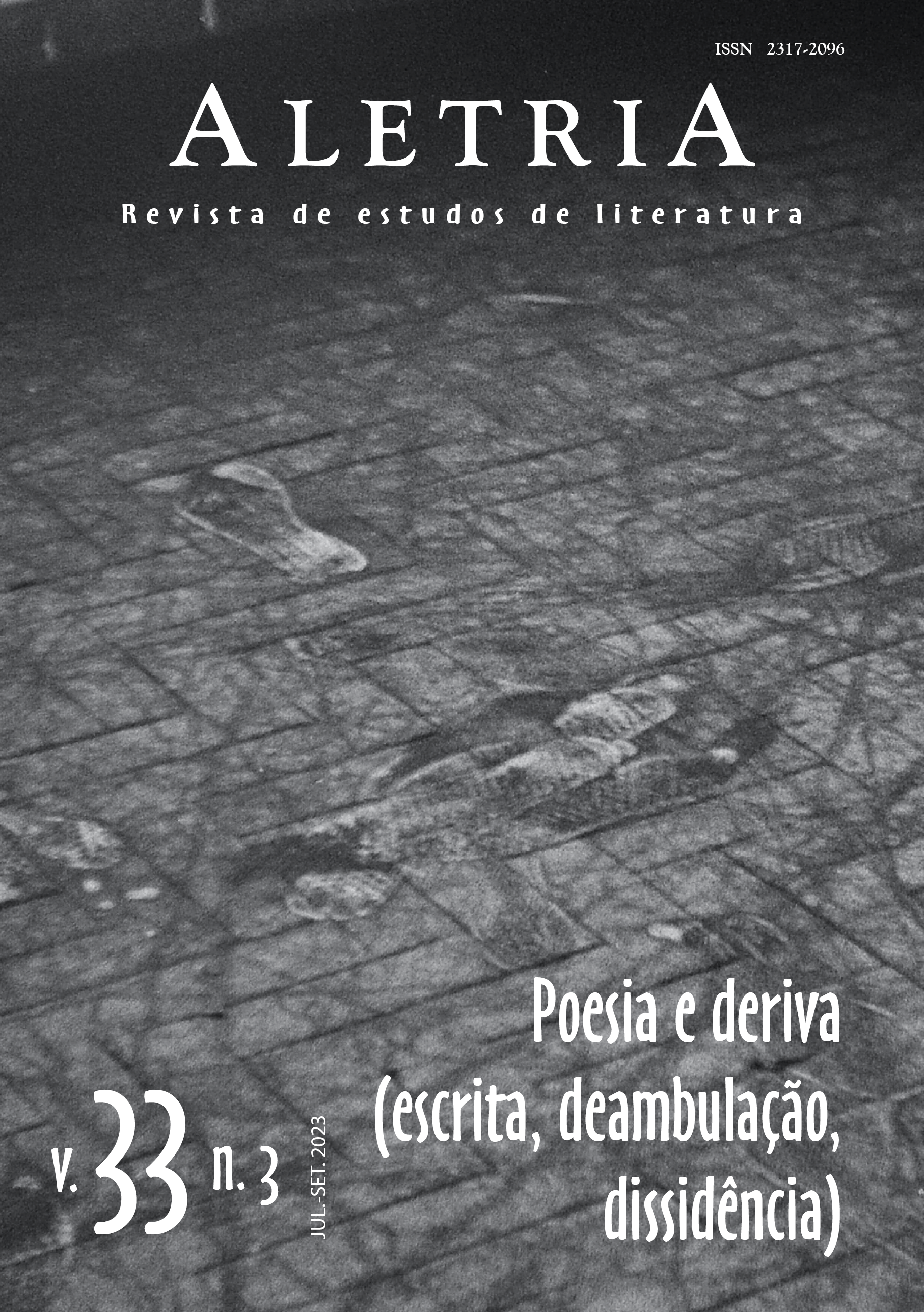Shinjū Ten no Amijima, de Chikamatsu Monzaemon
dos jogos de palavras ao conflito giri-ninjō
Palabras clave:
teatro japonês, Bunraku, período Edo, literatura japonesa, Chikamatsu Monzaemon, japanese theatre, edo period, japanese literatureResumen
Resumo: O teatro de bonecos bunraku, também conhecido como ningyō jōruri, é uma das quatro formas tradicionais de arte dramática japonesa. Embora tenha tido sua estrutura estudada com o merecido fôlego em língua portuguesa, suas peças ainda carecem, nos estudos literários brasileiros, de um olhar analítico mais aprofundado. Foi para bunraku que alguns dos principais textos da literatura dramática nipônica foram escritos, com especial destaque às obras de Chikamatsu Monzaemon (1653-1725), mais relevante dramaturgo do Japão pré-moderno (1600-1868). Este artigo tem por objetivo tecer considerações sobre a peça Shinjū Ten no Amijima (Suicídio amoroso em Amijima – 1721), muitas vezes apontada como a obra-prima de Chikamatsu. Iremos nos ater na estrutura geral da peça, no jogo de palavras que compõe o título e no conflito entre o giri (“obrigações sociais”) e o ninjō (“sentimentos humanos”), aspecto frequentemente associado aos enredos das obras do dramaturgo.
Palavras-chave: teatro japonês; bunraku; período Edo; literatura japonesa; Chikamatsu Monzaemon.
Abstract: Japan’s puppet theater, bunraku, also known as ningyō jōruri, is one of the four traditional forms of Japanese dramatic art. Although the structure of bunraku has already been adequately studied in Portuguese language, its plays still lack, in Brazilian literary studies, a more in-depth analytical look. It was for bunraku that some of the main texts of Japanese dramatic literature were written, with special emphasis on the works of Chikamatsu Monzaemon (1653-1725), the most important playwright of pre-modern Japan (1600-1868). This article aims to make considerations about the play Shinjū Ten no Amijima (The Love Suicide at Amijima – 1721), often considered Chikamatsu’s masterpiece. We focus on the general structure of the play, on the plays on words that make up the title and on the conflict between giri (“social obligations”) and ninjō (“human feelings”), an aspect often associated with the playwright’s works.
Keywords: Japanese Theatre; Bunraku; Edo period; Japanese Literature; Chikamatsu Monzaemon.
Descargas
Citas
BENEDICT, Ruth. O crisântemo e a espada: padrões da cultura japonesa. 3ª ed. São Paulo: Perspectiva, 2006.
CHIKAMATSU, Monzaemon. Kamiya Jihei Kiinokuniya Koharu Shinjū Ten no Amijima. In: Chikamatsu Monzaemon zenshū (Obras Completas de Chikamatsu Monzaemon). v. 44. Tóquio: Shogakukan, 1975, p. 463-509.
GERSTLE, C. Andrew. Circles of Fantasy: Convention in the Plays of Chikamatsu. Cambridge e Londres: Harvard University Press, 1986.
HEINE, Steven. Tragedy and Salvation in the Floating World: Chikamatsu’s Double Suicide Drama as Millenarian Discourse. The Journal of Asian Studies, Cambridge, v. 53, n. 2, p. 367-393, maio 1994.
KATO, Shuichi. Tempo e espaço na cultura japonesa. Trad. Neide Nagae e Fernando Chamas. São Paulo: Estação Liberdade, 2012.
KEENE, Donald. World within Walls: Japanese Literature of Pre-Modern Era 1600-1867. New York: Grove Press, 1978.
KOBAYASHI, Kyōji. Shinjū e no shotaijō: karei naru ren’aishi no sekai. Tōkyō: City Books, 2022. E-book.
KUSANO, Darci. Os teatros Bunraku e Kabuki: uma visada barroca. São Paulo: Perspectiva, 1993.
LAOZI. Dao De Jing: O livro de Tao. São Paulo: Hedra, 2014.
LEITER, Samuel L. Historical Dictionary of Japanese Traditional Theatre. Lanham, Maryland: Scarecrow Press, 2006.
OKUBO, Tadakuni. Chikamatsu. Tóquio: Kodokawa Shoten, 1990.
PINGUET, Maurice. A morte voluntária no Japão. Trad. Regina Abujamra Machado. Rio de Janeiro: Rocco, 1987.
SPROVIERO, Mário. Notas. In: LAOZI. Dao De Jing: O livro de Tao. São Paulo: Hedra, 2014, p. 205-263.
YOSHIDA, Tamao; YAMAKAWA, Shizuo. Bunraku no otoko: Yoshida Tamao no sekai. Tōkyō: Tankosha, 2002.
Descargas
Publicado
Cómo citar
Número
Sección
Licencia
Derechos de autor 2023 José Carvalho Vanzelli (Autor)

Esta obra está bajo una licencia internacional Creative Commons Atribución 4.0.
Authors who publish with this journal agree to the following terms:Authors retain copyright and grant the journal right of first publication with the work simultaneously licensed under a Creative Commons Attribution Non-Commercial No Derivatives License that allows others to share the work with an acknowledgement of the work's authorship and initial publication in this journal.Authors are able to enter into separate, additional contractual arrangements for the non-exclusive distribution of the journal's published version of the work (e.g., post it to an institutional repository or publish it in a book), with an acknowledgement of its initial publication in this journal.Authors are permitted and encouraged to post their work online (e.g., in institutional repositories or on their website) prior to and during the submission process, as it can lead to productive exchanges, as well as earlier and greater citation of published work (See The Effect of Open Access).





